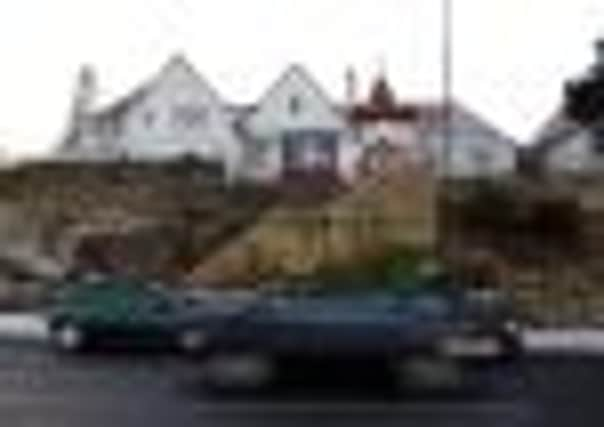More than one in three Scots roads sub-standard


An official annual check on the state of non-trunk roads found 36.2 per cent were in poor condition, with roads in rural council areas and the most minor roads in a worse state than a year ago.
But there has been an overall improvement across all council-maintained roads of 0.2 percentage points over last year.
Advertisement
Hide AdAdvertisement
Hide AdAll but the most minor roads were in a better state than at the time of the last survey, along with those in other council areas.
However, 39 per cent of unclassified roads – the most minor – were below standard, 0.8 percentage points more than in 2012. Rural councils include Argyll and Bute, and Dumfries and Galloway.
No estimate of the backlog cost was included, but it was put at £1.73 billion in 2011.
The survey covered all roads except motorways and trunk roads such as the A1 and A9, which are the responsibility of Scottish Government agency Transport Scotland.
All non-trunk A roads, half of the more minor B and C-class roads, and 10 per cent of unclassified roads were checked.
Those classed as sub-standard, or “needing attention”, had defects and did not provide “an even running surface free from deformation”.
The Society of Chief Officers of Transportation in Scotland (Scots), which represents council roads officials, said its survey showed things were improving.
Chairman Ewan Wallace said: “The latest road condition indicator is slightly improved and this continues a trend reported last year. There is growing optimism that a decline over many years has been stemmed.”
Advertisement
Hide AdAdvertisement
Hide AdMr Wallace attributed the improvement to more joint working between councils, which had been recommended by an Audit Scotland report in 2011.
He said: “Partnership working amongst roads services across all Scottish councils is producing positive results. In difficult economic conditions, councils are delivering efficiencies combined with increased investment in roads. This is good news for road users.”
Neil Greig, the Institute of Advanced Motorists’ policy and research director, said: “This survey is the most scientific we have to assess the state of Scotland’s roads, and its findings show a glimmer of hope that long-term decline is being stemmed.”
But he added: “Every day, Scots drivers still see the results of chronic underfunding of roads, with potholes and surface break-up all too common. It is crucial these small gains are not lost by further cuts to council roads spending.
“Partnership working and more efficient working are all part of the solution, but consistent, long-term funding is still needed to reduce the backlog.”
David Lonsdale, assistant director of business group CBI Scotland, said: “It is encouraging that the deterioration in the overall condition of local authority-maintained roads appears to have been stemmed.
“Far greater collaboration between councils in the management and maintenance of their local roads network – or indeed greater outsourcing of this service, as the Scottish Government itself does with trunk roads – could improve value for money and release funds for tackling the repairs backlog.”
The Convention of Scottish Local Authorities said the survey showed “clear results” despite several harsh winters.